
Learn all about the benefits of the JR Kansai WIDE Area Pass and the destinations that you can explore in central Japan with this travel pass.
(Main image: Klook)
- Table of Contents
-
- Types of JR Kansai WIDE Area Pass & Prices
- Why Choose the JR Kansai WIDE Area Pass?
- What are the Main Sights to See with the JR Kansai WIDE Area Pass?
- Practical Information About the JR Kansai WIDE Area Pass
- Alternatives to the JR Kansai WIDE Area Pass
- See Kansai and Beyond Whilst Saving Time and Money with the JR Kansai WIDE Area Pass!

Located in the center of Japan’s main island of Honshu, the Kansai region combines a wonderful blend of world-famous cities (like Osaka, Kyoto, and Kobe), gorgeous scenery, stunning beach-lined coastlines, and much more. As well as some of Japan’s most famous attractions and landmarks, Kansai features plenty for those looking to head off the beaten path and discover a different side of the country.
A great way to explore Kansai is with the JR Kansai WIDE Area Pass, a travel pass that is only available to foreign visitors to Japan. An extra benefit of the JR Kansai WIDE Area Pass is that it can also be used to travel to several areas located outside Kansai.
Types of JR Kansai WIDE Area Pass & Prices

The JR Kansai WIDE Area Pass is a 5-day travel pass that can be used to travel on unlimited journeys on specific trains operated by Japan Railways (JR) in the Kansai region. The pass also allows you to travel on a handful of other regional train lines that are operated by other companies, as well as two bus services, making it a great way to see more of Kansai.
Among the destinations that can be visited beyond Kansai are Tottori, which is famous for its sweeping sand dunes, and the city of Takamatsu on Shikoku Island, just across the Seto Inland Sea.
Another benefit of the JR Kansai WIDE Area Pass is that it allows you to travel on Limited Express trains operated by JR within the area, such as the Haruka service between Osaka and Kansai International Airport or the Kuroshio service between Kyoto and Shingu on the Wakayama coast. The JR Kansai WIDE Area Pass can also be used on the Shinkansen between Shin Osaka Station and Okayama, although it can’t be used on bullet trains between Osaka and Kyoto. Seat reservations for the Shinkansen or any of the included Limited Express services can be made at no additional cost.
The full list of JR train lines that can be used with the JR Kansai WIDE Area Pass are:
The Ako Line, the Bantan Line, the Biwako Line, the Fukuchiyama Line, the Gakkentoshi Line, the Hokuriku Line, the Imbi Line, the Kakogawa Line, the Kansai Line, the Kansai-airport Line, the Kishin Line, the JR Kobe Line, the Kosei Line, the Kusatsu Line, the JR Kyoto Line, the Maizuru Line, the Man-yo Mahoroba Line, the Momotaro Line, the Nara Line, the Osaka Higashi Line, the Osaka Loop Line, the Sagano Line, San-in Line, the San-yo Line, the Tsuyama Line, the JR Takarazuka Line, the JR Tōzai Line, the Uno-Port Line, the Wakayama Line, the Yamatoji Line, and the JR Yumesaki Line.
There are three non-JR train lines that you can also use with the JR Kansai WIDE Area Pass. These are the Chizukyu Express Line, the Kyoto Tango Railway for trains to Amanohashidate, and the Wakayama Electric Railway, famous for the station-master cats who work at Kishi Station.
With the JR Kansai WIDE Area Pass, you can also enjoy discounts on entry to certain attractions in the area, including Osaka Castle and Himeji Castle. Holders of the pass can also use Ekirin Kun, JR West’s bicycle hire service, free of charge. Bicycles can be collected from several locations within the area that the pass covers, including from Kyoto Station, Nara Station, and Kobe Station. A full list of locations where the rental bikes can be used can be found here.
A full map showing all of the train lines and buses covered by the JR Kansai WIDE Area Pass can be found on the official website (PDF).
What is the Cost of the JR Kansai WIDE Area Pass?
The JR Kansai WIDE Area Pass costs 12,000 yen for anyone aged 12 and over. For children aged 6-11 years old the pass costs 6,000 yen.
Who Might Benefit the Most from the JR Kansai WIDE Area Pass?
The JR Kansai WIDE Area Pass will benefit those that want to see a number of different destinations across the region. The pass would be ideal for those who intend to take different day trips each day to a different part of Kansai, or if you plan on moving around the region over the course of five days.
If you plan on using the pass for a series of day trips over five days then it would be best to be based in either Kyoto or Osaka as these are the easiest and often the quickest places to travel from.
Where to Buy the JR Kansai WIDE Area Pass
The JR Kansai WIDE Area Pass can be bought online from the JR West website or through travel agents such as Klook.
Why Choose the JR Kansai WIDE Area Pass?

The Pass Covers an Excellent Choice of Varied Destinations
As its name suggests, the JR Kansai WIDE Area Pass covers a significant area of central Japan. With the pass, you can travel between Kyoto and Osaka, the region’s two biggest cities, as well as take trips to other popular destinations, such as Nara, Himeji, and Kobe.
The JR Kansai WIDE Area Pass also lets you explore some of the lesser-visited parts of the region, including much of Wakayama’s beautiful coastline, the historic towns dotted along Lake Biwa and picturesque Amanohashidate in northern Kyoto.
Save Money on Train Travel in Kansai
The JR Kansai WIDE Area Pass does offer great value for money for those who intend to explore a variety of different destinations across the Kansai region. The cost of the pass will easily come in cheaper than buying individual tickets for each destination, especially if you’re using the Shinkansen or Limited Express trains.
Save Time at the Train Station
Buying the JR Kansai WIDE Area Pass also means that you can save valuable travel time during your trip. With the freedom to travel on so many train lines, you won’t lose any precious holiday time queuing up in train stations buying individual tickets for every journey you take.
Travel on Shinkansen and Limited Express Trains at No Extra Cost
A real benefit of the JR Kansai WIDE Area Pass is the ability to travel on the bullet train between Osaka and Okayama as well as several Limited Express train services. These are the fastest and most comfortable trains in Japan and depending on the journey can cut down the total time of your journey.
You will need to reserve seats in advance for Limited Express trains and you can also choose to reserve seats on the Shinkansen too (there are cars with unreserved seats on most Shinkansen trains). However, even if you do need to reserve seats, these are covered by the JR Kansai WIDE Rail Pass and won’t cost any extra. You can reserve seats on Limited Express trains either at ticket machines or at ticket offices located inside JR stations.
- Not the Best Pass for Traveling Around Kyoto, Osaka or Kobe. The JR Kansai WIDE Area Pass cannot be used to travel on any of the subway lines in Kyoto, Osaka or Kobe, meaning that it is not recommended if you need to travel within Kansai’s major cities.
The pass can be used on the Osaka Loop Line, which is useful for traveling to some of the city’s most popular attractions, such as Osaka Castle, the Umeda Sky Building and Shitennoji Temple. However there are several other train and metro lines in Osaka that are much more convenient for getting around the city than the Osaka Loop Line which are not covered by the JR Kansai WIDE Area Pass. - Not Valid on the Shinkansen Between Kyoto and Osaka. While the JR Kansai WIDE Area Pass can be used to travel on the Shinkansen between Osaka and Okyama, it can’t be used to travel by bullet train between Kyoto and Osaka. However, this isn’t necessarily a major problem as you can use the pass to travel on the Special Rapid Service on the Kyoto Line instead and this journey takes just under 30 minutes.
- The Pass Doesn’t Include Any Trains to Mie Prefecture. Despite its name, the JR Kansai WIDE Area Pass does not include travel on any trains in Mie Prefecture. If you’re keen to visit some of Mie’s most famous sites, such as the Ise Grand Shrines or the Meoto Iwa wedded rocks then you might want to consider buying a different travel pass, such as the 5-Day Kintetsu Rail Pass.
What are the Main Sights to See with the JR Kansai WIDE Area Pass?

Kyoto
The capital of Japan for over 1,000 years, Kyoto is home to some of the grandest and most important temples and shrines in Japan, including the Fushimi Inari Shrine, Kiyomizu-dera Temple and Kinkaku-ji Temple’s golden pavilion. Take a walk along the atmospheric streets of the historic geisha district of Gion and enjoy the soothing sound of swaying bamboo in Arashiyama Bamboo Grove.
Osaka
Osaka is a vibrant and colorful city that in many ways is the polar opposite of Kyoto. Osaka’s highlights include historic sites such as Osaka Castle and more modern attractions including Universal Studios Japan and Osaka Aquarium Kaiyukan. The city is famous for its bustling nightlife and its love of food, and the neighborhoods of Umeda, Namba and Dotonbori, which are known for fabulous street food and dazzling neon signs, all make for a perfect night out.
Nara
An easy day trip from either Kyoto or Osaka, Nara is renowned for its ancient temples and the friendly deer that freely roam around Nara Park. The centerpiece of Nara Park is the iconic Todai-ji Temple with its 15-meter tall Great Buddha statue, and Kasuga Taisha Shrine with its thousands of lanterns. Next to Nara Park are two beautiful traditional Japanese gardens, Yoshikien Garden and Isuien Garden, both of which are wonderful spots to relax away from the crowds.
Kobe
The cosmopolitan port city of Kobe is famous for its international influences, which are most evident in the neighborhood of Kitano whose streets are still lined with historic Western-style houses. Also in the center of Kobe is Nankinmachi, the city’s long-established Chinatown district. There are stunning views of the city from the top of Mount Rokko and of the picturesque waterfront from the Kobe Port Tower. While in Kobe don’t miss out on the chance to sample some delicious Kobe beef.
Himeji
Located in Hyogo Prefecture, Himeji’s biggest attraction is the magnificent Himeji Castle, one of the country's most iconic and well-preserved feudal-era fortresses. Designated a UNESCO World Heritage site and a National Treasure, Himeji Castle was built in the early 17th century and is widely considered to be the most spectacular in Japan. Surrounding the castle is Koko-en Garden, a beautifully landscaped traditional Japanese garden which features several walking paths, picturesque ponds, and teahouses.
Uji
Only 20 minutes south of Kyoto, Uji is most famous for its high-quality green tea. There are numerous cafes and stalls located along Uji’s high street where you can try a bowl of matcha before visiting the Byodoin Temple. A UNESCO World Heritage Site, Byodoin Temple is known for its stunning Phoenix Hall, a masterpiece of traditional Japanese architecture which features on the 10 yen coin. This is also the city that's home to the Nintendo Museum!
Okayama
Okayama is located in the neighboring region of Chūgoku, and the city’s most famous landmark is Okayama Castle, also known as "Crow Castle" due to its striking black exterior. The best views of the castle can be seen from Korakuen Garden, located directly opposite the Asahi River. Korakuen Garden is considered to be one of the three best gardens in Japan and was originally built as a private garden for the local feudal lord in the 17th century. Open to the public since 1884, the garden features lush landscapes and picturesque ponds filled with colorful koi carp.
Kurashiki
Kurashiki is famous for its beautifully preserved Edo-period merchant district called the Bikan Historical Quarter, where rows of traditional whitewashed warehouses sit on either side of picturesque canals. The Ohara Museum of Art showcases an excellent selection of artworks by Western and Japanese artists, while you can explore the shops and cafes at the historic Kurashiki Ivy Square, a former textile mill transformed into a cultural hub. Kurashiki is also the birthplace of the denim industry in Japan and is the perfect place to find hand-crafted high-quality jeans.
Kinosaki Onsen
Located in the north of Hyogo Prefecture, Kinosaki Onsen is a serene hot spring town renowned for its therapeutic waters, picturesque main street and tree-lined canal. Beautiful in every season, Kinosaki Onsen has been a popular hot spring resort for over 1,000 years. If you’re planning a day trip there are seven public hot springs in Kinosaki Onsen as well as dozens of welcoming ryokan if you’d prefer to stay and relax overnight.
Takamatsu
Takamatsu is the capital of Kagawa Prefecture located on Shikoku island across the Seto Inland Sea. The city’s most famous attraction is Ritsurin Garden, a huge traditional Japanese garden that sits at the foot of Mount Shiun. Designated as a National Treasure, Ritsurin Garden includes thousands of pine trees, several scenic ponds and the picturesque Kikugetsu-tei teahouse. A short ferry ride from Takamatsu are the fascinating islands of Megijima, Ogijima and Oshima which can be explored on a day trip from the city.
Wakayama
Wakayama's most famous landmarks are Wakayama Castle, located in the heart of the city, and Kimiidera Temple which was established in the 8th century and features sweeping sea views. With the JR Kansai WIDE Area Pass you can also explore Wakayama Prefecture’s beautiful coastline. The pass can be used to travel to the stunning beaches at Shirohama and even as far as Nachi or Shingu for the Kumano-Nachi Taisha or Kumano Hayatama Taisha, two of the region’s most important and historic shrines.
Hikone
One of many historic towns dotted around Lake Biwa, Hikone is renowned for its historical significance and rich cultural heritage. The town is centered around the elegant Hikone Castle. Constructed in the early 17th century and designated as a National Treasure, Hikone Castle is another of Japan's few remaining original castles. Surrounding the Hikone Castle is Genkyuen Garden, a beautiful Japanese garden that dates from the 17th century and features picturesque ponds as well as pretty pavilions and traditional teahouses.
Tottori
Tottori is best known for the captivating Tottori Sand Dunes, the largest sand dune system in Japan that stretches along the coastline facing the Sea of Japan. Next to the dunes is the excellent Sand Museum, which features stunning artworks sculpted by sand made by artists from all over the world. Also worth exploring is the historic Tottori Castle Ruins and the Western-style Jinpukaku Mansion, built in the early 20th century for the visit of Crown Prince Yoshihito.
Amanohashidate
Amanohashidate in northern Kyoto Prefecture is famous for the narrow sandbar lined with thousands of pine trees that stretches across Miyazu Bay. Known as one of Japan's three scenic views, you can cross the sandbar on foot or by bicycle and also take a traditional boat cruise along the bay. A beautiful beach flanks the eastern side of the sandbar which is best viewed from the observation decks at either end of Amanohashidate which can be accessed by cable car or monorail. Dotted around Amanohashidate are several shrines and temples, including the iconic Chion-ji Temple whose ornate two-storey pagoda dates from the 16th century. Not far away by bus are the tranquil boathouses of Ine, well worth visiting.
Tsuruga
Situated on the coast in Fukui Prefecture, Tsuruga is an easy day trip with plenty to explore. The city’s days as a major port is most visible at the Tsuruga Red Brick Warehouse, now home to an impressive diorama that depicts Tsuruga as it was in the early 20th century. Nearby, the Port of Humanity Tsuruga Museum recounts the fascinating story of the Japanese diplomat who rescued thousands of lives by offering Jews facing persecution in Europe safe passage to Japan, via Tsuruga, during World War Two. Overlooking Tsuruga Bay is Kehi no Matsubara, a pretty beach surrounded by pine trees while the 11-meter tall torii gate at Kehi Jingu Shrine has been designated as one of the three best gates in Japan.
Kansai International Airport and Shinkansen Stations
If Kansai is your first or last stop in Japan then the JR Kansai WIDE Area Pass can also be used to travel to or from Kansai International Airport on the Kansai-Airport Line. If you’re moving on to another part of Japan after visiting Kansai the pass can also be used to reach the Shinkansen stations in Kyoto, Osaka, Himeji, Kobe and Maibara.
Practical Information About the JR Kansai WIDE Area Pass

Who is eligible to buy the JR Kansai WIDE Area Pass?
The JR Kansai WIDE Area Pass is only available to overseas tourists who are visiting Japan with a Temporary Visitor status.
How do I collect the JR Kansai WIDE Area Pass?
When ordering the JR Kansai WIDE Area Pass online you will be sent an e-ticket which must be exchanged for a physical ticket at a ticket office at any one of a number of locations in Japan, such as Kansai International Airport, Kyoto Station or Osaka Station.
When you collect the JR Kansai WIDE Area Pass you will need to show your passport with a stamp from immigration that states you are visiting Japan on a Temporary Visitor visa when you collect your pass.
Does the JR Kansai WIDE Area Pass have to be used on consecutive days?
Yes, the JR Kansai WIDE Area Pass is valid for 5 consecutive days from the date that it is first used.
How long is the JR Kansai WIDE Area Pass valid for?
The JR Kansai WIDE Area Pass is available to buy all year round. After ordering the pass online you will need to exchange it for the physical ticket within 90 days. Once you’ve exchanged the e-ticket, the JR Kansai WIDE Area Pass must then be activated within 30 days.
Is the JR Kansai WIDE Area Pass good value for money?
Yes, on the whole the JR Kansai WIDE Area Pass is excellent value for money. To get the most value from the pass it pays to take advantage of the wide area that it covers and to travel to a different destination each day, either on day trips or by moving around Kansai and even beyond to destinations such as Tottori, Okayama or Takamatsu.
Alternatives to the JR Kansai WIDE Area Pass
Here are a few alternatives to the JR Kansai WIDE Area Pass that you might want to consider.
Kansai Railway Pass - Available as either a 2-day or 3-day pass, the Kansai Railway Pass allows unlimited travel on 20 train lines operated by private companies across the region. Though it doesn’t cover as wide an area as the JR Kansai WIDE Area Pass and is valid for fewer days, the Kansai Railway Pass is cheaper and does cover trains to all of Kansai’s most popular destinations. See details about the Kansai Railway Pass here|a=article:a2000918@>.
Kintetsu Rail Pass - The Kintetsu Rail Pass allows unlimited travel on up to 20 train lines in Kansai operated by Kintetsu. The pass is available as either a 1-day, 2-day or a 5-day pass and would be a better option for those who specifically want to visit Mie Prefecture. See details about the Kintetsu Rail Pass here
JR West Kansai Area Pass - Available as a 1-day, 2-day, 3-day or 4-day pass, the JR West Kansai Area Pass covers a similar area of Kansai as the WIDE Area Pass but doesn’t include travel to destinations further away such as Kinosaki Onsen, Tottori, Okayama, and the Wakayama coastline. See details about the JR West Kansai Area Pass here.
See Kansai and Beyond Whilst Saving Time and Money with the JR Kansai WIDE Area Pass!

The JR Kansai WIDE Area Pass is an excellent way to travel to some of the best destinations in central Japan. Allowing travel on multiple train lines operated by Japan Railways, including Limited Express and some Shinkansen services, the pass is perfect for anyone ready to explore this beautiful and fascinating region of Japan. With the added bonus of being able to travel to areas outside of Kansai, including Takamatsu, Okayama and Tottori, the JR Kansai WIDE Area Pass offers excellent value for money and is a great way of seeing much more of Japan.
For JR Kansai WIDE Area Pass details, see the official website.
Written by:

*Prices and options mentioned are subject to change.
*Unless stated otherwise, all prices include tax.
Limited time offer: 10% discount coupons available now!
Recommended places for you
-

Kamesushi Sohonten
Sushi
Umeda, Osaka Station, Kitashinchi
-
Goods

Yoshida Gennojo-Roho Kyoto Buddhist Altars
Gift Shops
Nijo Castle, Kyoto Imperial Palace
-

Jukuseiniku-to Namamottsuarera Nikubaru Italian Nikutaria Sannomiya
Izakaya
Kobe, Sannomiya, Kitano
-

Kiyomizu-dera Temple
Temples
Gion, Kawaramachi, Kiyomizu-dera Temple
-
Menu

ISHIDAYA Hanare
Yakiniku
Kobe, Sannomiya, Kitano
-
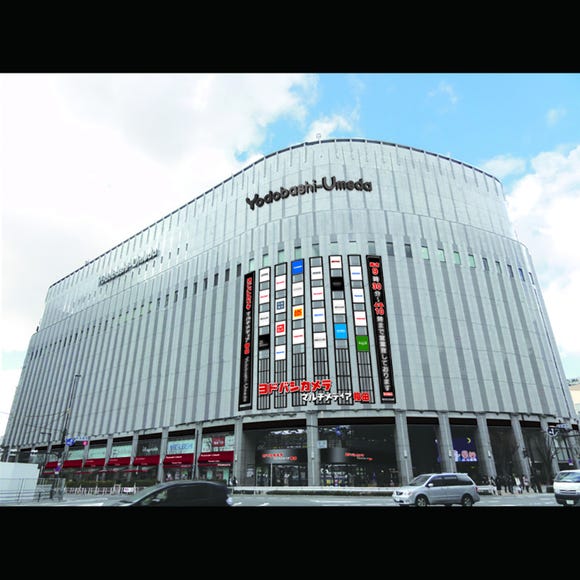
Yodobashi Camera Multimedia Umeda Store
Shopping Malls
Umeda, Osaka Station, Kitashinchi
-

11 Must-Try Restaurants Near Kiyomizu-dera Temple: From Kyoto Cuisine to Traditional Tofu Dishes and Popular Eateries
-

Local Specialties & Restaurants in Kinosaki Onsen: A Food Lover's Guide to Sea and Mountain Delicacies
-

10 Must-Try Restaurants in Shinsekai: Classic Skewers, Popular BBQ, and Sky-High Dining with Spectacular Views
-

Make the Most of 'Universal Cool Japan' (2024 Guide) - Detective Conan, Monster Hunter & More
-
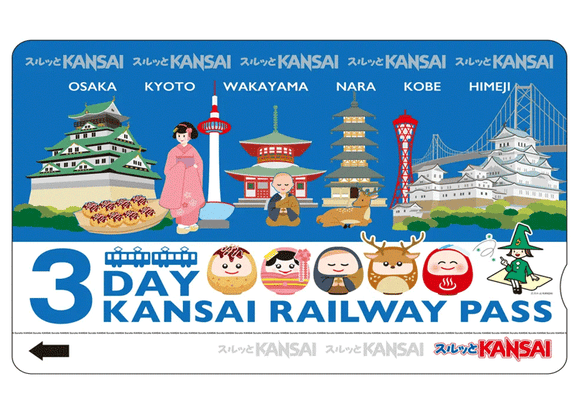
Everything You Need to Know About the Kansai Railway Pass
-

Looking For Hotels in Kyoto? Choose Comfort! Local-Meisters Offer Insights on 3 Unique Brands
-

8 Unique Things to Do At Kyoto Station - According to Locals
-
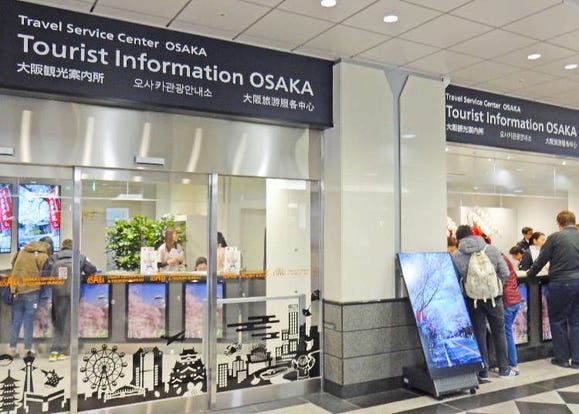
Osaka Travel Service Center: So Many Incredibly Convenient Services - in English!
-
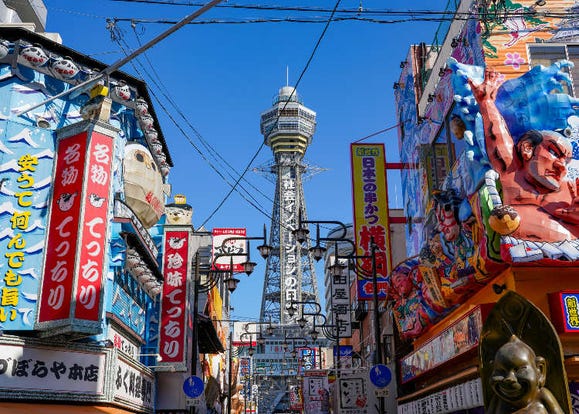
Travel Guide to Osaka: Popular Destinations, Activities, Hotels & More
-
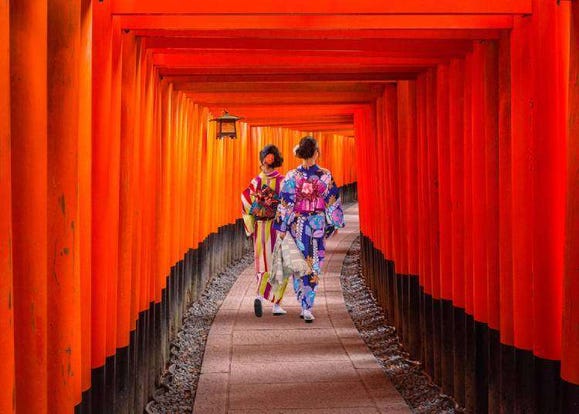
10 Major Cities in Japan: Which One Should Top Your Bucket List?
-
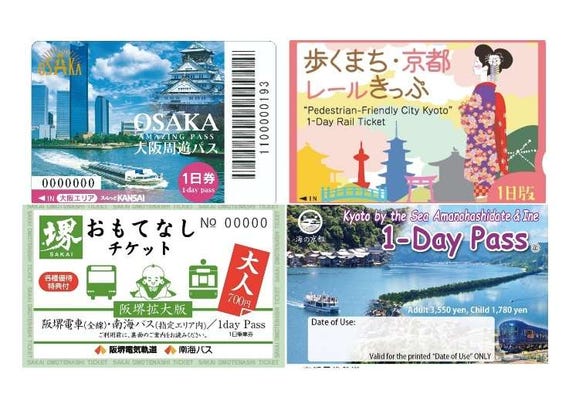
7 Amazing Train Passes for Japan's Kansai Area: Save Huge While Exploring Kyoto, Osaka & More!
-
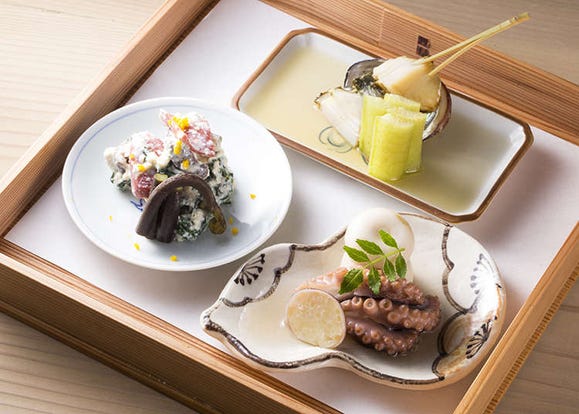
Fine Japanese Dining in Kyoto! Top 3 Japanese Restaurants in Kiyamachi and Pontocho Geisha Districts
- #best gourmet Osaka
- #things to do Osaka
- #what to do in kyoto
- #what to bring to japan
- #best gourmet Kyoto
- #new years in Osaka
- #what to buy in nanba
- #Visiting Osaka
- #onsen tattoo friendly arima
- #daiso
- #Visiting Kyoto
- #best japanese soft drinks
- #japanese fashion culture
- #japanese convenience store snacks
- #japanese nail trends




























